

Exploring our past to sort out myth from reality
Share this Page on
Facebook or Twitter

These are the voyages of the TimeShip Anachron.
Our Mission: To boldly explore the past, dispelling
mythinformation and mythconceptions
of American History along the way.
 Visit us on Facebook
Visit us on Facebook
Meet MythAmerica LITE
We All Squeam…for Icequeam!

Summer finally arrived here a couple of weeks ago. [This article was originally written in May, in Georgia.] No, I didn’t pay any attention to the exact date on the calendar. I knew it was summer because I heard the first Ice Cream Truck of the season! It was several blocks away when it first dawned on me what I was hearing. There is no mistaking the sound of any other vehicle for an ice cream truck. It’s not a sound of a motor rumbling, or brakes squealing, or a horn honking. It’s a blaring loudspeaker playing a never-
More often than not the song is “Turkey in the Straw.” If not, it’s likely “The Entertainer.” Beyond that, there’s a very short repertoire that some company in the ancient past created for the purpose. Actually, this year it was amazing to me to think that ice cream trucks are still plying the streets in many towns and cities across the country. They’ve been at it for almost a century now, and you’d think they’d have gone the way of the milkman and his milk wagon delivering glass bottles of milk in the early morning to doorsteps.
After all, you can go into almost any grocery and find a whole frozen dessert section with just about any kind of ice cream treat you can imagine. There are six-
Anyone who doesn’t know the answer to that likely had no childhood. Buying something from the Ice Cream Man and his Ice Cream Truck was never just about having a dessert! It was about excitement and anticipation. Hearing that first faint tinkle in the distance and estimating just where he was at the time in your neighborhood and how long it would take him to get to your block.
And it was about self-
Well, actually, although I grew up in the 1950s I don’t really have any memories of my own of ice cream trucks! For some reason, they didn’t ply the streets of my childhood neighborhood in Dayton, Ohio. We went to the corner Mom and Pop grocery store with our quarter and bought our treats there. Nor, when I moved to the small northern Michigan town of Traverse City in the mid-
My Ice Cream Truck Memories are second-
For all you fans of the Icequeam Twuck out there, I thought I’d pull together a little mini-
Icequeam Twuck History
Here are pics of the earliest type of motorized Ice Cream trucks. This kind of truck would have had no refrigeration unit, and would have sold only hand-
1915
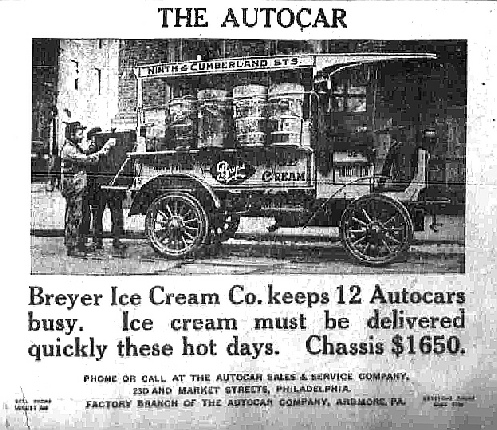
1916
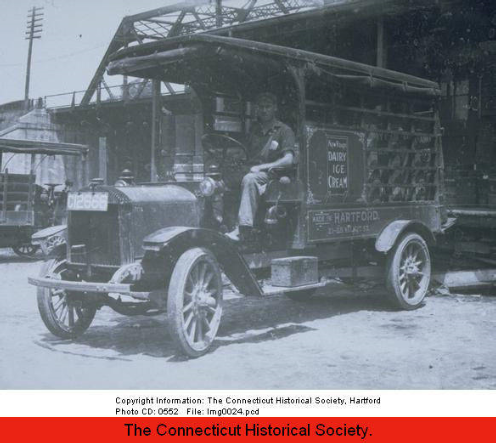
But 1919 saw the beginnings of the more creative frozen treats we all connect with buying from the Ice Cream Man these days. That’s the year that Christian Nelson figured out a way to get melted chocolate to stick to bricks of ice cream—and dubbed his invention the I-
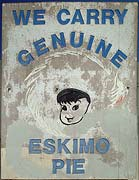
A year or so later, ice cream parlor owner Harry Burt was making a similar treat. But handling the lump of chocolate-
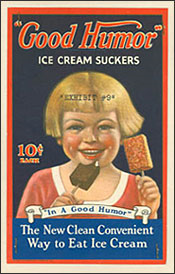
Burt was a creative merchandiser, and shortly outfitted small vending trucks with bells to drive up and down the streets hawking their frozen wares. For many years the Good Humor company dominated and set the pace for the Ice Cream Trucks of America. Their white-
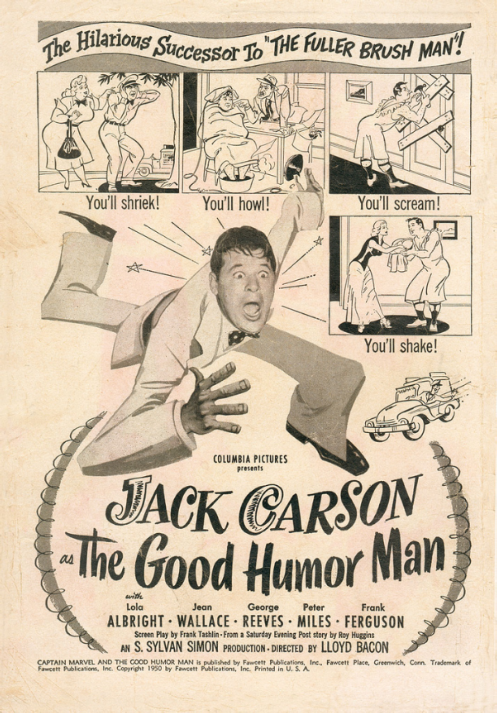
And back in 1950 there was even a Captain Marvel comic book that told the whole story of the movie.
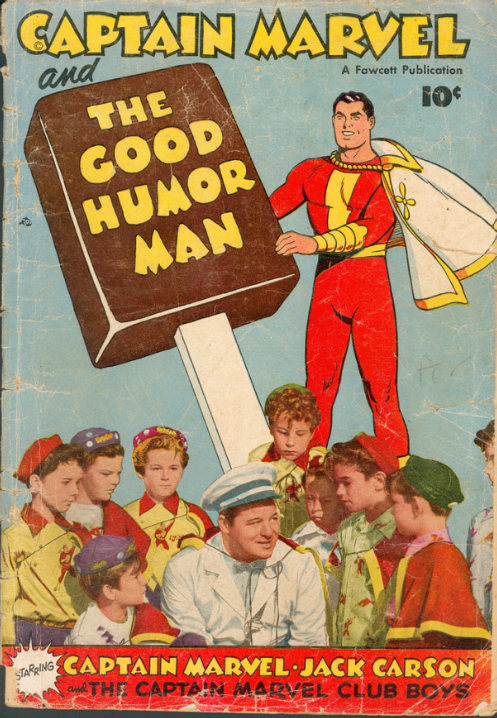
In the movie, a group of kids from a local Captain Marvel Club help solve a crime. If you happen to be a Captain Marvel fan, you’re in luck. The whole comic book is now digitally available online!
Captain Marvel and the Good Humor Man
The movie cast consisted mostly of actors even most baby boomers have likely never heard of…except for George Reeves, a few years before he became Superman on TV.
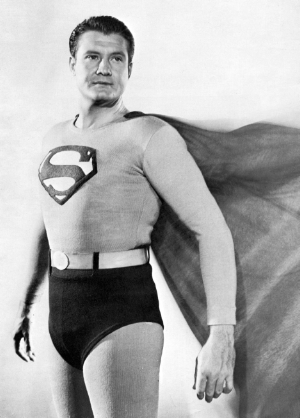
Although Good Humor long dominated the Ice Cream truck business across the land for many years, there have always been regional competitors. Here are a few Good Humor trucks and others from throughout the decade.
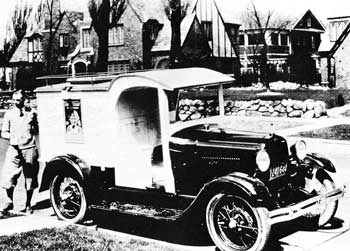
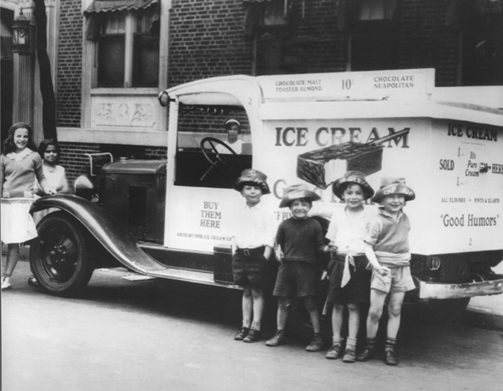
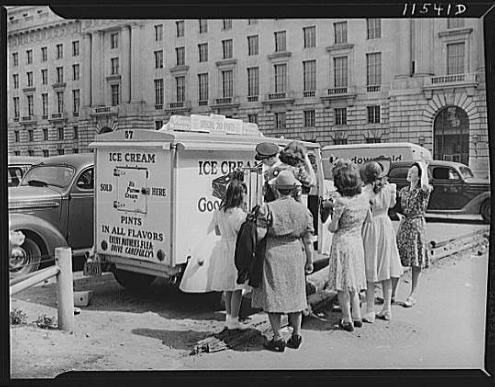
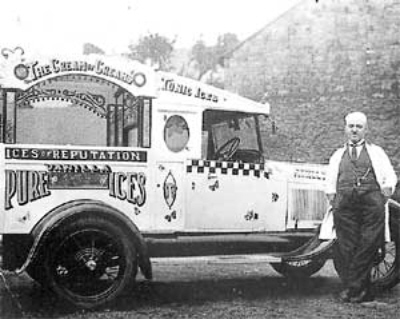
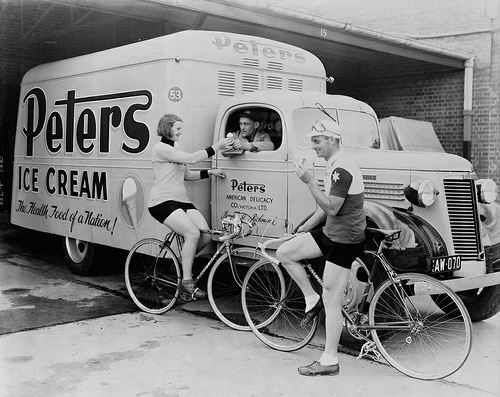
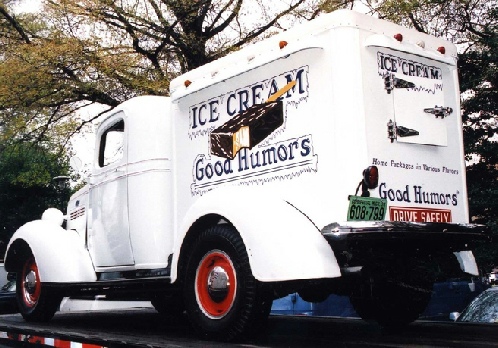

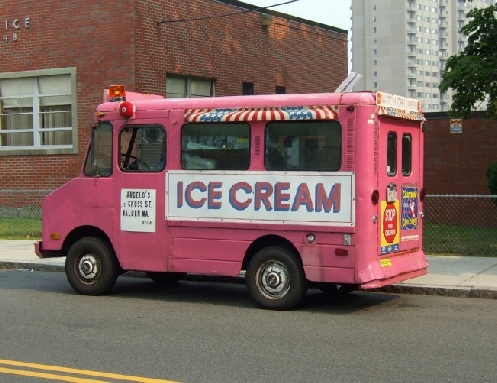
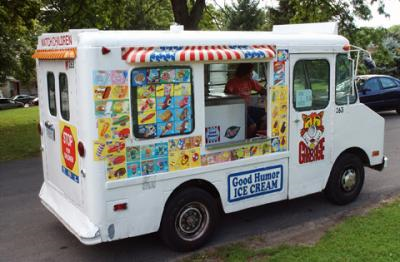
EVERYBODY can have fond memories of the ice cream truck…
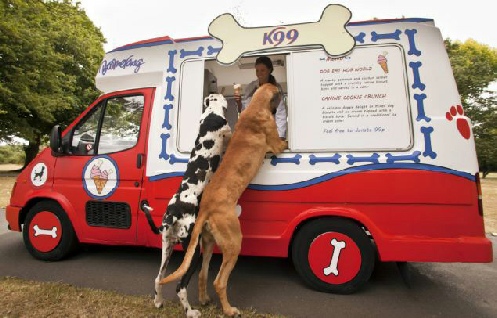
And in spite of this sight below, it’s never too hot to cool down with a treat from the ice cream truck!
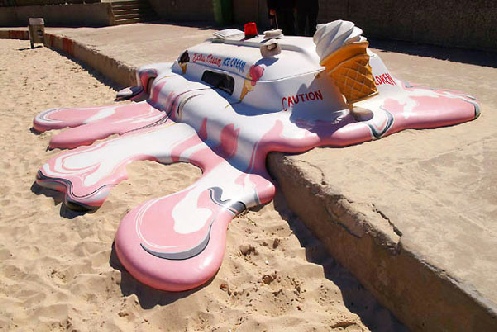
But of course the most memorable thing about Ice Cream Trucks is that “special” brand of music that heralds their coming.
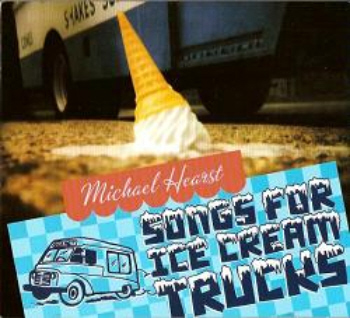
The Daily Apple blogger summarizes the history of that music:
From jingling bells, the trucks graduated to playing music. In 1929, a California ice cream man bolted a music box to the roof of his truck and connected it to an amplifier.
Other ice cream men followed suit, sort of. But for most of them, they had to crank the music boxes by hand. It was pretty tricky to drive and crank the music at the same time, so a lot of the time the songs ran out while the trucks were driving, and the drivers waited until they’d stopped to crank up the music again.
Then they graduated to a “clockwork-
In the 1950s, Nichols Electronics invented a transistorized version of the machine. Amplifiers on those systems ran off the truck’s battery.
More recently, the chime-
One driver estimates that he has listened to the same 40-
See more on The Daily Apple blog.
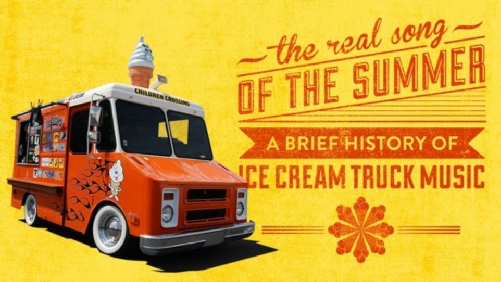
You can read a bit more extensive history of the Ice Cream Truck music box on the Canadian CBC Music site. The Real Song of Summer . Here’s a bit of that story, explaining how we ended up with that weird tinkly music blasted by the modern Ice Cream Truck.
So how did the chime box become the go-
In 1927, the first known chime box was custom built, and it played a traditional Polish song called “Stodola Pumpa.” It became its vendor’s trademark. Ice cream trucks didn’t become ubiquitous until after the Second World War, and that’s when the Nelson Company began manufacturing chime boxes, though they weren’t terribly energy-
All that to say, when you hear an ice cream truck playing “Little Brown Jug,” you’re hearing an updated version of a 30-
(You can check out even more details at the link given above.)
The Washington Post even had a special article on Ice Cream Truck music a while back.
So I’m obviously not the only person with sticky memories of the Ice Cream Man! I’ll bet even you do. If you’re not nostalgic yet, I dare you to listen to the video below and not have the slightest craving for a chocolate-